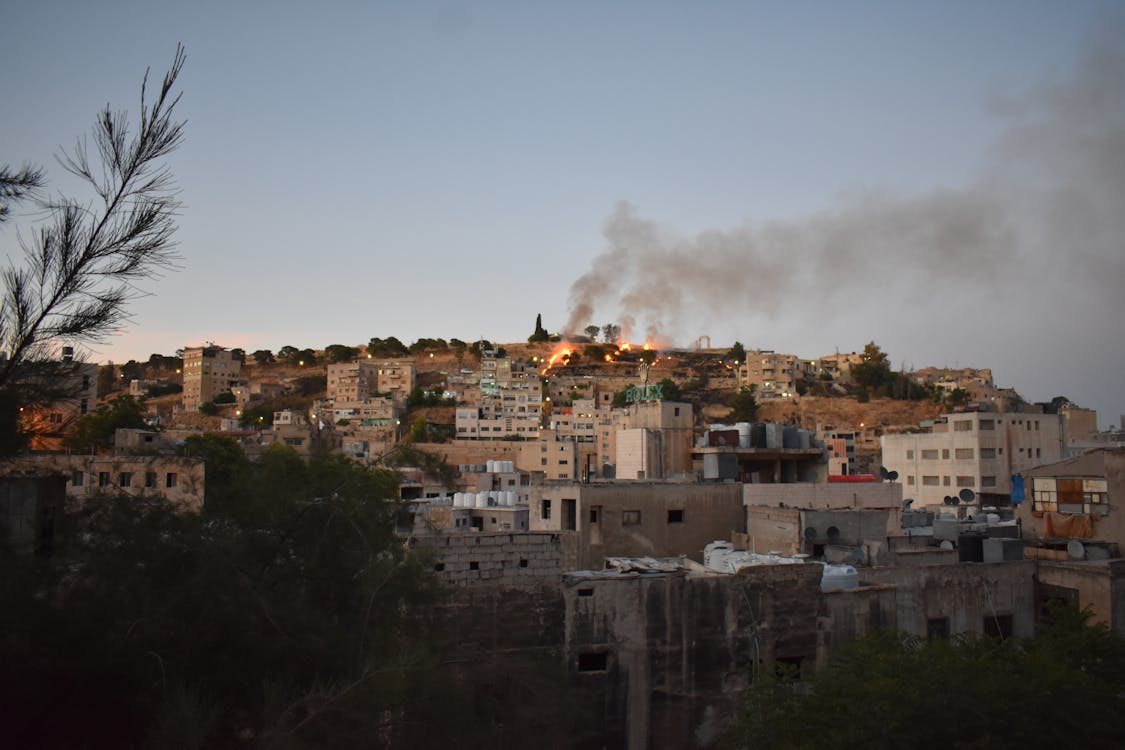Fires pose a significant threat to buildings and can result in devastating consequences, including structural collapse. Understanding the causes of building collapses due to fire and implementing preventive measures is crucial to safeguarding lives and property. In this article, we will explore the reasons behind such collapses, examine preventive measures, and emphasize the importance of fire safety in buildings.
Understanding Fire and Its Effects on Buildings
Fire is a powerful force that can have devastating effects on buildings. When a fire engulfs a structure, it releases intense heat, generates thick smoke, and weakens the structural integrity of the building. The destructive power of fire lies in its ability to rapidly spread and consume combustible materials, such as wood, fabrics, and plastics, which are commonly found in buildings. As the fire progresses, it can cause structural components, like steel beams and concrete walls, to lose their load-bearing capacity and integrity. The high temperatures can also cause these materials to deform and warp, further compromising the stability of the building. Understanding the destructive nature of fire is crucial in developing effective fire prevention and safety measures to protect buildings and the lives of those within them.
The Destructive Power of Fire
Fire is a powerful force that can rapidly consume and destroy structures. It releases intense heat, generates toxic smoke, and weakens the structural integrity of buildings. As fire spreads, it engulfs combustible materials, causing structural components to lose their load-bearing capacity.
Impact on Structural Integrity
When exposed to high temperatures, building materials, such as steel and concrete, may lose their strength and begin to deform. This compromises the overall stability of the structure, increasing the risk of collapse. The effects of fire on buildings depend on various factors, including fire duration, heat intensity, and construction materials used.

David Henry
Common Causes of Building Collapse Due to Fire
There are several common causes that can lead to the collapse of buildings during a fire. One significant cause is electrical malfunctions. Faulty wiring, overloaded circuits, or inadequate maintenance of electrical systems can ignite fires within buildings, eventually compromising their structural integrity. Another cause is arson and intentional fires. Deliberately started fires, often motivated by criminal intent, can rapidly spread and weaken the building’s structural elements, resulting in collapse. Poor fire safety measures also contribute to building collapses. Insufficient fire detection and alarm systems, ineffective fire suppression equipment, and inadequate evacuation plans hinder swift response and evacuation during fire incidents. Lastly, inadequate structural design plays a role. Buildings with subpar construction techniques, weak load-bearing elements, or improper use of fire-resistant materials are more prone to collapse during a fire emergency. Identifying and addressing these common causes is crucial in preventing building collapses and protecting lives.
Electrical Malfunctions
Electrical faults, such as short circuits, overloaded circuits, or faulty wiring, can ignite fires within buildings. These malfunctions may occur due to inadequate maintenance, substandard electrical installations, or outdated systems. Electrical fires can quickly escalate, leading to building collapses if not promptly controlled.
Arson and Intentional Fires
Deliberately started fires, often motivated by criminal intent or arson, pose a significant threat to buildings. Arson attacks can target residential, commercial, or public structures, endangering lives and causing extensive damage. Such intentional acts can weaken the structural elements and result in catastrophic collapses.
Poor Fire Safety Measures
Insufficient fire safety measures within buildings can exacerbate the risk of collapse. Lack of fire detection and alarm systems, inadequate fire suppression equipment, and ineffective evacuation plans can hinder swift response and evacuation during a fire incident. Neglecting fire safety protocols increases the vulnerability of buildings to structural failures.
Inadequate Structural Design
Buildings with subpar structural design and construction techniques may fail to withstand the effects of fire. Weak load-bearing elements, improper fire-resistant materials, and compromised structural integrity can contribute to collapse during a fire emergency. Design flaws and shortcuts in construction compromise the building’s ability to withstand fire-related stresses.
see our previous post about Low-Rise Buildings
Fire Prevention and Safety Measures for Buildings
To enhance fire safety in buildings and prevent collapses, implementing effective fire prevention and safety measures is crucial. These measures include installing reliable fire detection and alarm systems throughout the building, ensuring prompt detection, and alerting occupants in case of a fire emergency. Additionally, adhering to proper electrical safety practices, such as regular inspections and maintenance, helps mitigate the risk of electrical malfunctions that can lead to fires. Regular fire safety inspections are essential for identifying and addressing potential hazards, ensuring compliance with safety regulations, and maintaining a safe environment. Installing efficient fire suppression systems, such as sprinklers and fire extinguishers, aids in controlling and extinguishing fires before they escalate. It is imperative to prioritize these preventive measures to protect lives, minimize property damage, and maintain the structural integrity of buildings.
Installing Fire Detection and Alarm Systems
Early detection of fires is crucial for minimizing damage and preventing collapses. Installing smoke detectors, heat sensors, and fire alarms throughout buildings can provide prompt alerts, allowing occupants to evacuate safely and firefighters to respond swiftly. Regular maintenance and testing of these systems are essential to ensure their effectiveness.
Implementing Proper Electrical Safety Practices
To mitigate the risk of electrical fires, it is vital to follow proper electrical safety practices. This includes regular inspections, addressing potential hazards promptly, using quality electrical components, and ensuring compliance with electrical codes and standards. Professional electricians should handle electrical installations and repairs to minimize the risk of fire incidents.
Conducting Regular Fire Safety Inspections
Regular fire safety inspections help identify potential fire hazards and ensure compliance with safety regulations. Building owners and managers should conduct inspections to assess fire exits, emergency lighting, fire suppression systems, and overall adherence to fire safety protocols. Prompt remediation of identified issues is crucial for maintaining a safe environment.
Ensuring Adequate Fire Suppression Systems
Installing effective fire suppression systems, such as sprinklers and fire extinguishers, plays a vital role in limiting the spread of fires and preventing building collapses. These systems can suppress fires at their early stages, giving occupants more time to evacuate and reducing the overall impact on the structure. Regular maintenance and testing of fire suppression systems are essential to guarantee their functionality.

imustbedead
Importance of Building Codes and Regulations
Building codes and regulations play a pivotal role in ensuring fire safety and preventing building collapses. These codes set standards for construction practices, materials used, and fire resistance requirements. By adhering to building codes, structures are designed and built to withstand the effects of fire and maintain their structural integrity. Building codes emphasize the use of fire-resistant materials, such as fire-rated walls, doors, and windows, which can help slow down the spread of fire within a building. Compartmentalization, another aspect emphasized by building codes, involves dividing buildings into fire-resistant compartments, preventing the rapid spread of fire and limiting its impact. Building codes also mandate the provision of clearly marked emergency exits, along with well-defined evacuation plans, ensuring that occupants can safely evacuate during a fire emergency. Overall, building codes and regulations are essential in creating a framework that promotes fire safety and resilience, reducing the risk of building collapses and safeguarding lives and property.
Building Materials and Fire Resistance
Building codes and regulations dictate the use of fire-resistant materials in construction, reducing the risk of structural failures during fires. Fire-resistant materials, such as fire-rated walls, doors, and windows, can slow down the progression of fires and provide additional time for evacuation.
Compartmentalization and Fire Spread Prevention
Building codes also emphasize compartmentalization, which involves dividing buildings into fire-resistant compartments. These compartments help contain fires, preventing their rapid spread and minimizing the potential for collapse. Compartmentalization plays a crucial role in protecting occupants and limiting damage.
Emergency Exits and Evacuation Plans
Building codes mandate the provision of clearly marked emergency exits, along with well-defined evacuation plans. These measures ensure that occupants can quickly and safely evacuate during a fire emergency. Regular drills and training sessions help familiarize occupants with evacuation procedures, enhancing their chances of a successful evacuation.
Collaborative Efforts: The Role of Architects, Engineers, and Firefighters
The collaboration between architects, engineers, and firefighters is vital in designing and constructing fire-resistant buildings. Architects and engineers should integrate fire safety measures into the building’s design, considering structural integrity, fire-resistant materials, and emergency egress routes. Firefighters play a crucial role in responding to fires, conducting rescue operations, and preventing further damage.

Claire
The Consequences of Building Collapse Due to Fire
Building collapses due to fire have far-reaching consequences that extend beyond the immediate destruction. One of the most significant consequences is the loss of life and injuries. When a building fails during a fire, occupants may become trapped, making rescue operations challenging. The collapse can also result in falling debris, posing additional risks to firefighters and rescue personnel. The physical and emotional toll on survivors and their families is immeasurable.
Loss of Life and Injuries
Building collapses due to fire can result in the tragic loss of life and cause severe injuries to survivors. When a building fails during a fire, occupants may become trapped, making rescue operations challenging. The collapse can also lead to falling debris, further endangering firefighters and rescue personnel. The physical and emotional toll on survivors and their families is immeasurable.
Economic and Environmental Impact
Building collapses due to fire have significant economic and environmental repercussions. The destruction of properties and infrastructure leads to substantial financial losses for individuals, businesses, and communities. Rebuilding and recovery efforts require significant resources and can disrupt local economies. Additionally, fires release harmful pollutants into the environment, contributing to air and water pollution.
Psychological and Emotional Toll
The psychological and emotional impact of building collapses due to fire extends beyond physical injuries and property damage. Survivors may suffer from post-traumatic stress disorder (PTSD), anxiety, depression, and other mental health issues. Witnessing the destruction of homes, workplaces, and community spaces can leave a lasting emotional scar on individuals and communities.
Building collapses due to fire are preventable tragedies. By understanding the causes and implementing effective fire prevention and safety measures, we can significantly reduce the risk of structural failures during fires. Proper installation and maintenance of fire detection systems, adherence to electrical safety practices, regular inspections, and compliance with building codes are essential. Collaboration between architects, engineers, and firefighters is crucial in designing and constructing fire-resistant buildings. Let us prioritize fire safety to protect lives, preserve property, and ensure the well-being of our communities.
